Jesse Krimes discusses the intricacies of Michel Foucault’s and Clement Greenberg’s writings as readily as he explains his family’s business running a sprint car racing track. The conflation of theory and lived experience is neither unexpected nor unusual, but rather mentioned here as illustration of the abundant stores that Krimes excavates as inspiration for his work. Krimes seems to humanize art theory by putting it through a process of deep reading, personal reflection, and even letting the words suggest alternative readings. His current body of work, on view at the Leonard Pearlstein Gallery at Drexel University, is the result of this approach, his intuitive pathfinding, and chance.
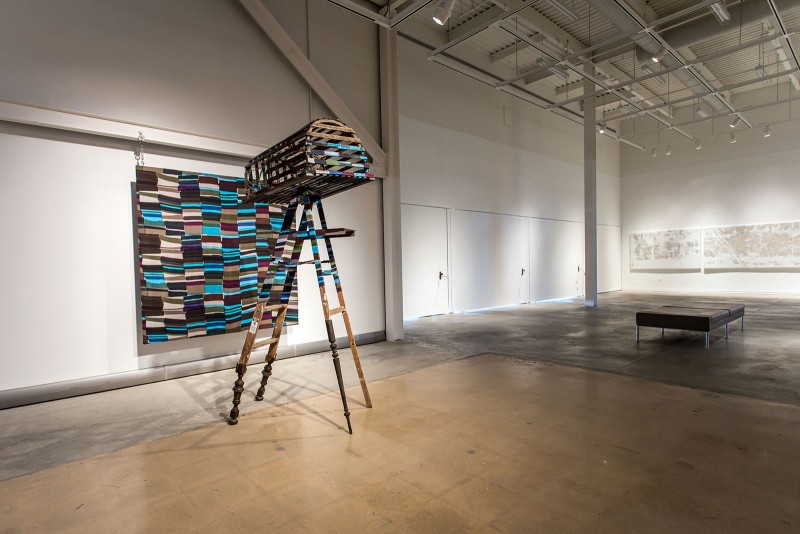
The first work of art we encounter in the gallery is the result of chance, in fact. “Prologue in Gold” (2015) consists of a shriveled and gilded grape held in cross-lock tweezers as though the grape is a specimen held up for our scrutiny. As Krimes explains in this Artblog Radio installment, this work evolved after a grape fell into a vat of primer. Some of the elements that we see in “Prologue in Gold”—depletion, scrutiny, gilding—repeat and morph in the eight other works installed here.
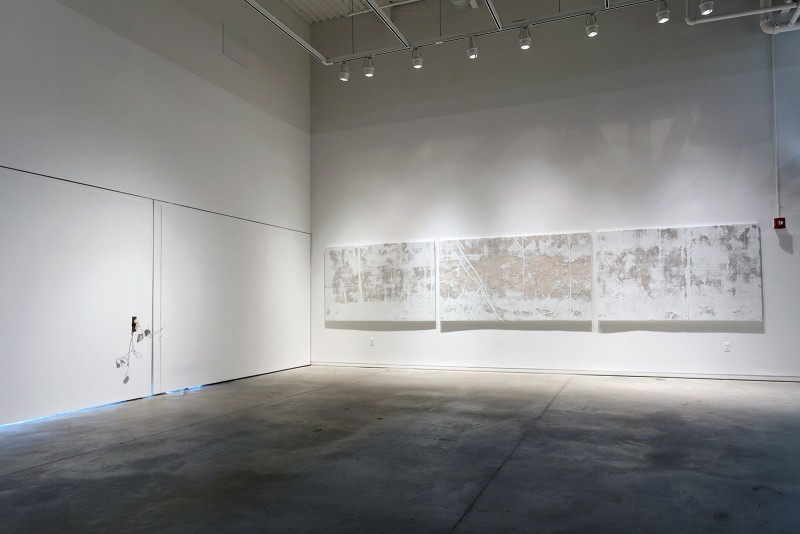
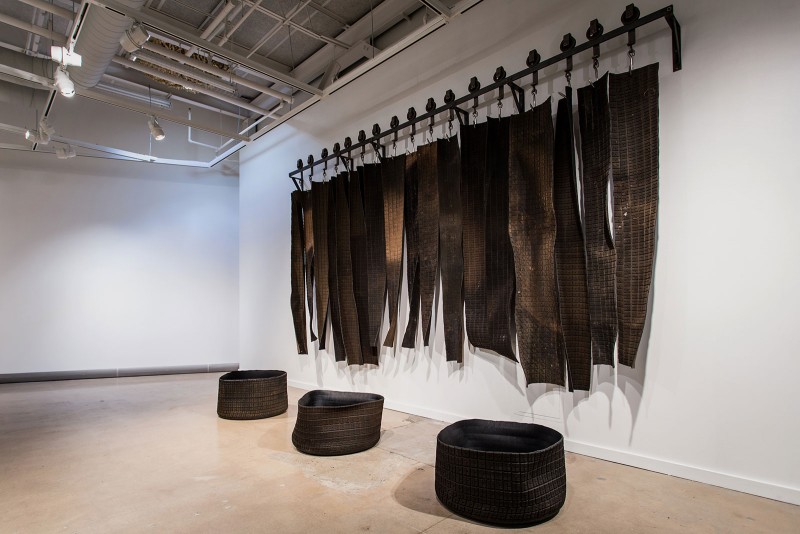
By the time we get to the last work in the gallery, the all immersive “Stage Engine” (2015), we realize that what we see—fire sprinklers, gilding, heating and plumbing ducts, surveillance cameras—were in the gallery and in the previous works of art all along, unnoticed or hidden in plain sight. There are many objects and materials to take in and consider in this exhibition, including cut-up racing tires, lobster traps, a large, old, dried-up beehive, and many painted tree branches. All this makes for visual delight and wonder. But it may be that these material-rich sculptures are also pointing the way for us to become aware of the less-often noticed elements: surveillance, the humming systems that run our built environment, slow and silent decay.
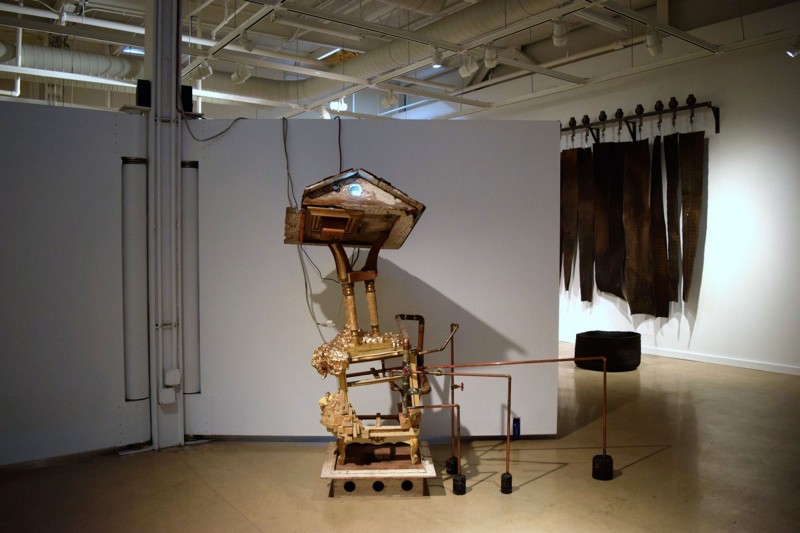
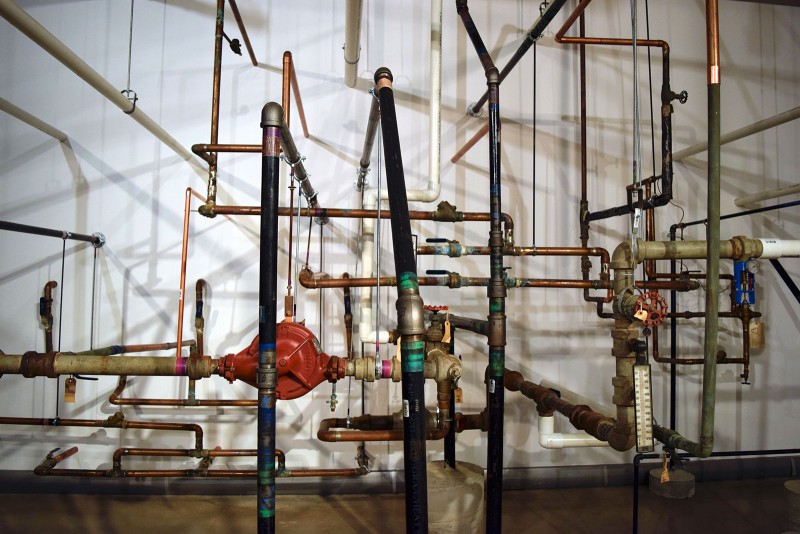
Jesse Krimes lives and works in Philadelphia. He has exhibited his work at the Zimmerli Art Museum in New Brunswick, New Jersey, the Eastern State Penitentiary in Philadelphia, and at the Palais De Tokyo in Paris, among other venues. Much has been written about the artist’s history with incarceration. Krimes has an art degree from Millersville University in Pennsylvania.
Deus Ex Machina remains on view at the Leonard Pearlstein Gallery at Drexel University in Philadelphia through March 18.









